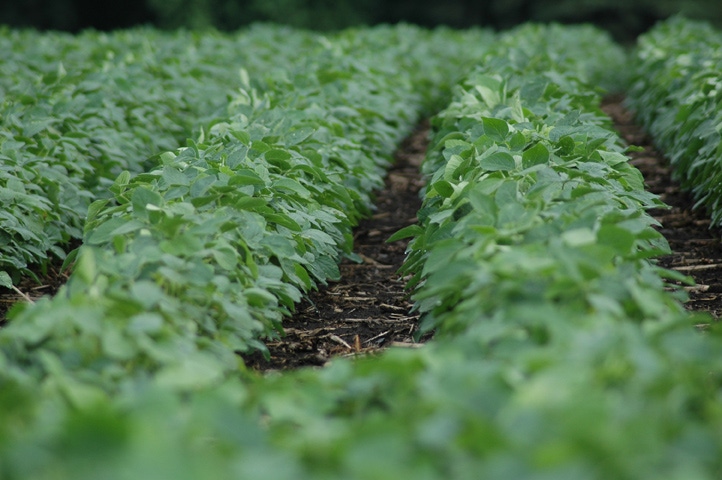
Regardless of the crop rotation and the productivity of the land in terms of yield, University of Illinois Ag Economist Gary Schnitkey indicates that expected crop prices in 2014 may be insufficient to pay current rates of cash rent, and have any money left over to pay for family living expenses.
August 2, 2013

With December corn prices at $4.67 and November soybean prices now under $12, many farmers are beginning to wonder how many bushels they will have to produce this year to generate enough revenue per acre to pay the bills and finance the 2014 crop. The latter issue is a bit clearer as crop budgets for 2014 crops can be created. The picture is not pretty, and some operations may be in the red if cash rent is a major expense.
“These operator and land returns are lower than many cash rents being charged in Illinois. Many counties, for example, have average cash rents higher than those shown. This may put downward pressure on rents during the upcoming negotiating season.” That is one of the conclusions of Illinois Farm Management Specialist Gary Schnitkeyin his forecast of 2014 crop budgets. And current futures prices are not all that far from the hypothetical commodity prices used by Schnitkey in his examples.
Using a theoretical price of $4.60 for corn and $11.92 for soybeans, Schnitkey says they are close to anticipated long-run average prices. 2014 harvest prices are currently under $5 for corn and under $12 for soybeans.
Generally, 2014 input costs are projected to be similar to 2013 input costs, which Schnitkey considers to be “non-land costs.” He says seed will be a little higher, along with machinery depreciation. Fertilizer prices may be softer in 2014, resulting from increased production capacity for nitrogen being built, and this week’s dissolution of the Russian potash cartel.
Although he does not specifically address it, Schnitkey uses a $28/acre crop insurance premium for a corn-soybean rotation and a $32/acre premium for a continuous corn rotation. Soybeans after corn require a $19/acre crop insurance premium. Assuming that these premiums will be adequate for a revenue protection policy in 2014, one must wonder what that spring price guarantee will be. At this point, the December 2014 futures price for corn is $4.98 and for beans is $11.79. Between now and next February, when the spring guarantees are set, those prices may not move much. You may want to prepare yourself for spring guarantees under $5 and under $12.
Based on a 50-50 corn and soybean rotation, Schnitkey says crop revenue will be $879/acre with a 191-bu. corn yield. Deducting $386 for direct input costs, $132 for power costs and $77 for overhead, he says the crop will cost $595 to produce, leaving $284 to pay cash rent and provide for family living.
For farms with continuous corn, Schnitkey projected a 181-bu. average yield, and a $219 return to operator and land, which will have to pay any cash rent and provide for the family.
Like what you're reading? Subscribe to CSD Extra and get the latest news right to your inbox!
For farms with a 50-50 crop rotation, those soybean acres will provide gross revenue of $616 from a 56 bu. yield. Crop production expenses total $350 in non-land costs, and $266 left over to pay cash rent and family living costs.
For farms with wheat acreage, the per-acre revenue is $435, based on a 75-bu. yield and a $5.80 wheat price. Non-land costs are $361, resulting in $74/acre to pay for cash rent and family living.
While not all land will produce the yields that Schnitkey has used in his calculations, he went through the same process for lesser productive land, and reports, “Returns in 2014 budgets suggest returns will be the highest for the corn-soybean rotation in all regions. In northern Illinois, for example, corn-soybeans has a $275/acre operator and land return, corn-corn-soybeans has a $264 return and continuous corn has a $219/acre return. These projected returns could signal a move towards more soybeans in Illinois in 2014.”
Read the article at farmgateblog.com.
You might also like:
When Will the Soybean Freefall End?
Scouting, Digging for Rootworm Damage
Humid, Wet Conditions Increase Risk for Foliar Soybean Disease
You May Also Like



